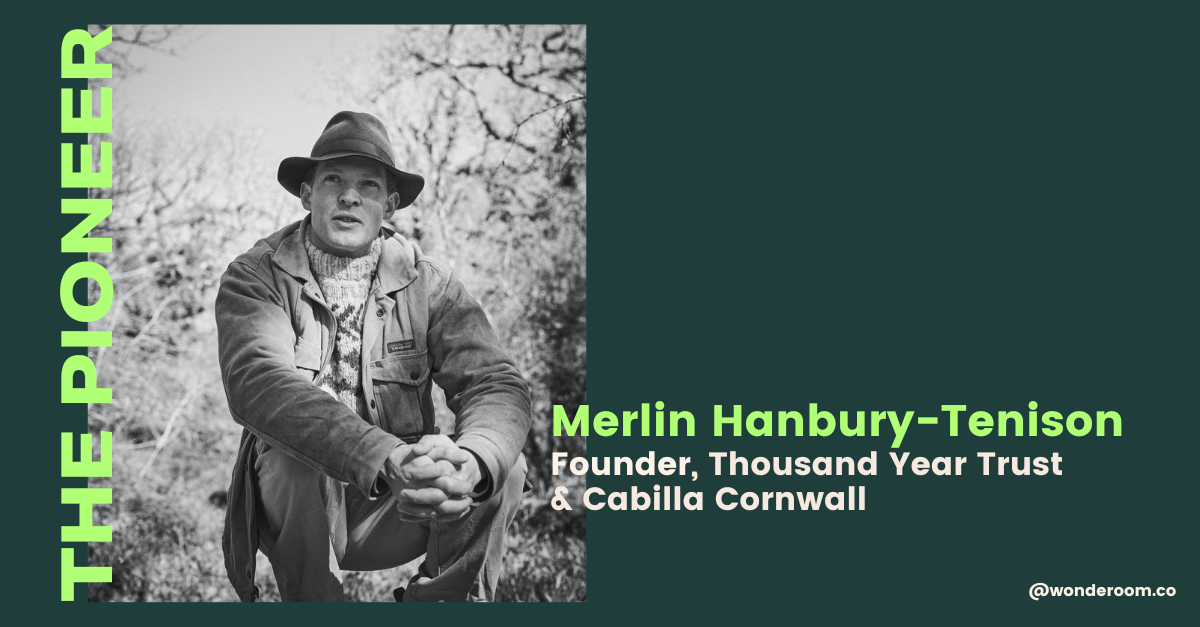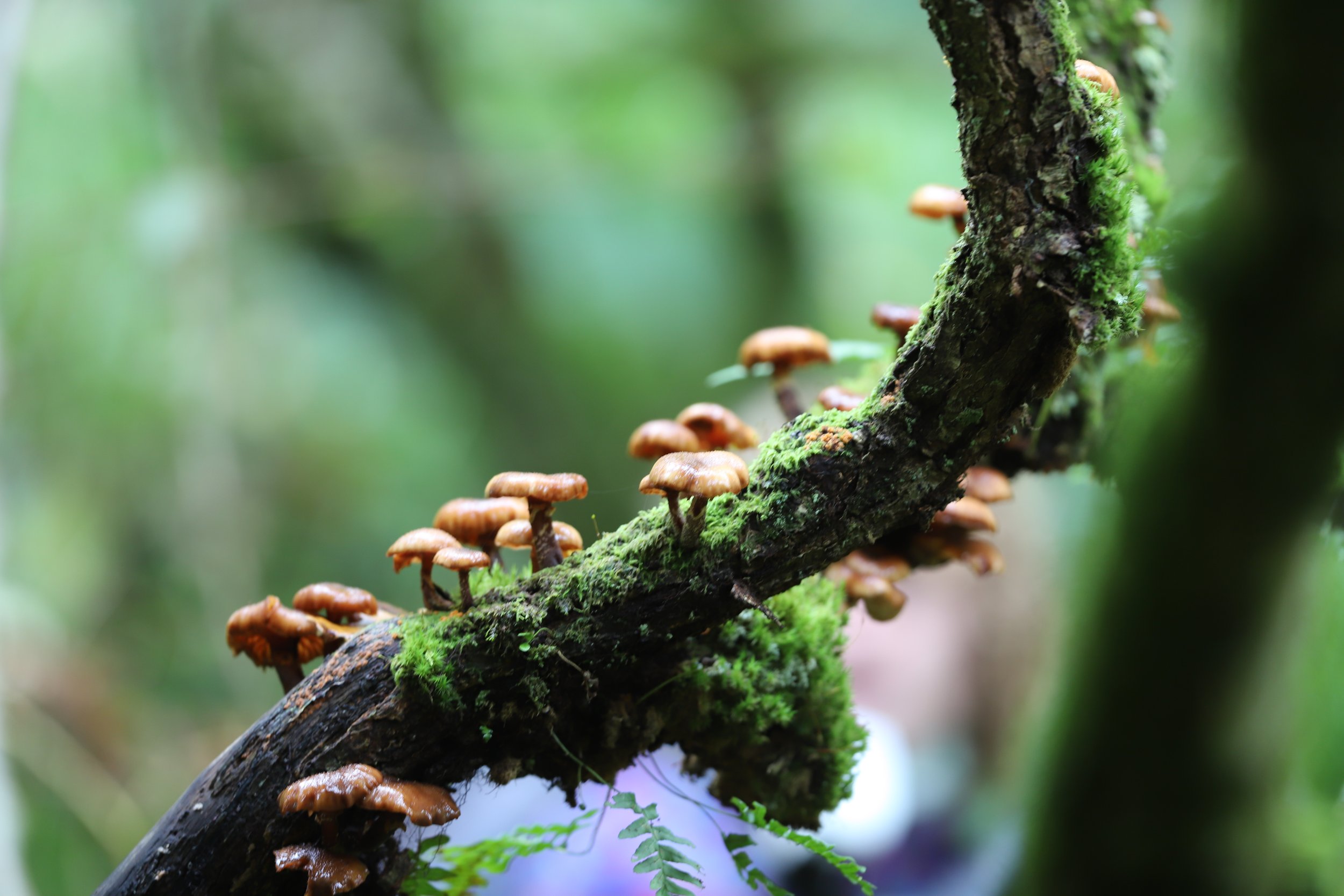Our Interview with Merlin Hanbury-Tenison, Thousand Year Trust
For the June Edition of The Wonder Letter, we sit down with Merlin Hanbury-Tenison, who alongside Lizzie Hanbury-Tenison, is the Founder of Cabilla Cornwall and the recently launched Thousand Year Trust . The Thousand Year Trust is a charity whose aim is to triple the amount of temperate rainforest growing across the UK over the next 30 years. For those unfamiliar with the story of UK temperate rainforests, we highly recommend reading Guy Shrubsole's ‘The Lost Rainforests of Britain' (Guy is also involved in the Thousand Year Trust). Here we sit down with Merlin to hear more about what inspired the Thousand Year Trust, the incredible value of temperate rainforests and his vision for nature restoration.
What inspired you to start The Thousand Year Trust (TYT)?
The temperate rainforest at Cabilla Cornwall has always been a deeply special habitat for both Lizzie and me (Lizzie Hanbury-Tenison is Merlin’s business and life partner). When I was working through PTSD from Afghanistan and Lizzie was recovering from post-natal anxiety after the birth of our first daughter the forest provided a healing balm that prevented both of us from becoming even more unwell. We spent every second we could down in the valley and it wasn’t long before we realised that the forest needed our help as much as we needed it. These fragile, vital ecosystems have been damaged to the point of collapse over the last thousand years and it’s only with human assistance that we can return them to their former glory. Our initial plan was simply to protect, restore and triple the size of the rainforest at Cabilla, a small fragment of the remaining celtic rainforest that remains in the UK. When we started this project it soon became clear that the mission is actually far larger and that we needed to dedicate our lives to restoring rainforests across Britain. The Thousand Year Trust is our way of doing this and its mission is to triple the amount of rainforest growing across the UK over the next 30 years.
Temperate Rainforests are having quite a moment. What makes them so unique in terms of their contribution to nature restoration and biodiversity efforts here in the UK?
Restoring the UK’s rainforests is vital, they are the best habitat we have for supporting carbon sequestration. Due to the density of growth, carbon fixed in the sub-soil and soil held in the canopy by epiphytes, temperate rainforests sequester and hold more carbon than other woodland types in the UK. Their restoration is a vital tool in the fight against climate change. Then there is the ecosystem services they provide. Due to the range of species and the high biodiversity potential of temperate rainforests there is no greater habitat in the UK for returning nature’s abundance and functionality. Lastly, when it comes to mental health and wellbeing, humans need nature and the deeper and older the nature the greater the restorative powers they hold.
What are the biggest challenges and opportunities you face as you seek to triple UK temperate rainforests in the next 30 years?
As always the biggest challenge is around education and awareness. Most people aren’t even aware that we have rainforests in the UK and they certainly aren’t aware of how important they are. We need to help the British public to truly understand the difference between the many kinds of woodland that we have across our island. We all know that nature is important but we have become increasingly ‘nature-blind’ concerning what species are native and what we’re missing. Species like beavers, bison, lynx and wolves are vital to healthily functioning ecosystems but they’ve left our cultural narrative and we’re afraid of the knock on impacts of bringing them back. Working with the farming community and the public at large to debunk myths, educate and support is going to be the most important and challenging aspect of the charity’s work.
You first opened Cabilla Cornwall (where some of the rainforests are based) on your own land in 2021. How has your work regenerating the land progressed and what have been some of the gifts so far?
Every day brings new gifts and working with the land is a huge privilege that both Lizzie and I are always grateful for. It’s incredible how quickly the abundance of nature returns when we relieve the pressure that we’ve put our native habitats under. The addition of beavers to the valley has been one of the first and most obvious changes. Our female, Sigourney, was released into the valley in 2020 and quickly began changing the landscape around her. As an ecosystem engineer she has wrought changes we couldn’t have imagined and the return of absent native butterflies, bats and small mammals has been the most obvious and immediate change. It’s wonderful to sit at the beaver dams in the evening and watch the bats pirouetting around the ponds and the common frogs leaping from the dam sides. The cacophony of life brings hope in the darkness.
We are also planting 100,000 trees across the farm and I can’t wait to see, every year, the progress that these young saplings will make. There is nothing like an oak tree for showing humans how little they truly understand the natural world and how our haste and impatience are unhelpful traits. As the trees grow the impact on our environment will be wholly positive and truly beautiful.
The financing and economics of nature restoration remain challenging despite the fact we know it’s critical for human and planetary health. What’s been your experience and is the tide turning?
The tide is definitely turning. Before we even begin to look at the financial modelling around ecosystem restoration efforts it’s important to scrutinise the status quo. Currently the average upland hill farmer on Bodmin Moor takes between 85-92% of their annual income from EU agricultural subsidies. These are benefits handouts from Brussels which are all ceasing in the next few years. So it’s not like we’re taking a robust and viable business and turning it upside down. On the uplands, ecosystem restoration is a way of taking a failing, broken system and re-examining it. Every political party has pledged to plant hugely ambitious numbers of trees and they now need to help farmers and landowners to achieve this through financing models that incentivise this work. The carbon and biodiversity net gain markets are embryonic but they will also provide additional funding streams that will help to wean farmers off sheep grazing. We’re not there yet and the government need to get in gear and start laying out a long term strategy around the future of farming support, especially on the uplands. The outlook is positive though and farmers are beginning to see the changing opportunities around land stewardship, especially in our Atlantic fringes.
How have you drawn inspiration from nature at critical points in your own life journey?
Biomimicry is a hugely important inspiration to both of us. Gaia is undoubtedly the greatest teacher and the wisdom of the earth should never be downplayed. There are a plethora of ways that both Lizzie and I have drawn succour from the oaks, the beavers, the river and the valley. I’d say the clearest and most important lesson that we can learn is one around patience and perseverance. It’s not called the Thousand Year Trust because it will be a quick fix and we have to release ourselves from the desire to see changes and improvements in the next few years, or even in our lifetimes. Viewing ecosystem restoration as a multi-generational mission is the most freeing and important lesson that we can learn. Everyone should be laying the ground work now so that our grandchildren’s grandchildren can have a healthy and happy life on this planet. This is the kind of long term view that an oak embodies but our current political or industrial systems eschew.
All Photo credits: Cabilla Cornwall and Thousand Year Trust.
For more on Merlin, Lizzie and Cabilla Cornwall including corporate retreats, you can visit their website here and for more on the Thousand Year Trust, you can visit the website here.
Sign up here to receive more pioneering stories on regenerative business in our monthly ‘Wonder Letter’ and join our community of pioneering leaders, brands and change-makers.




